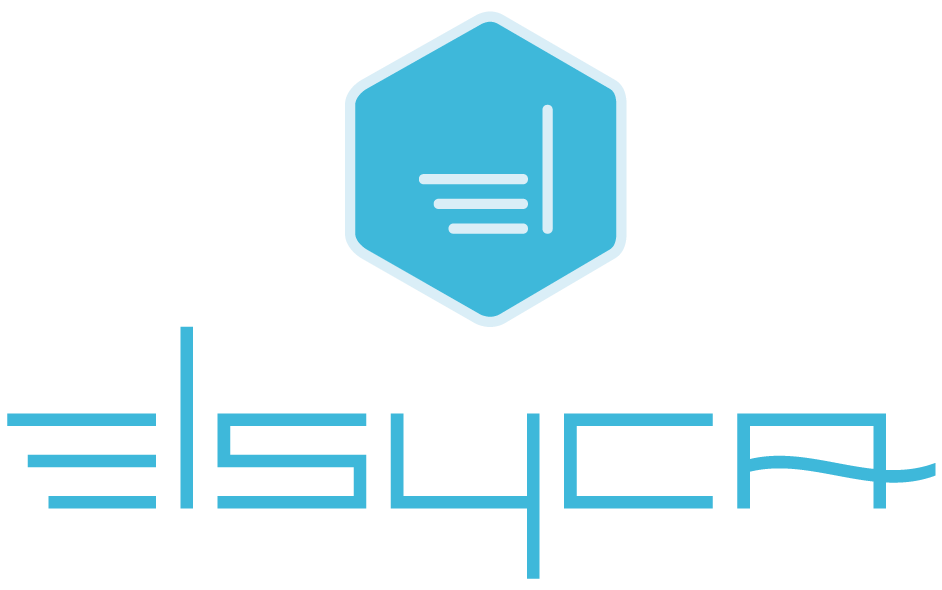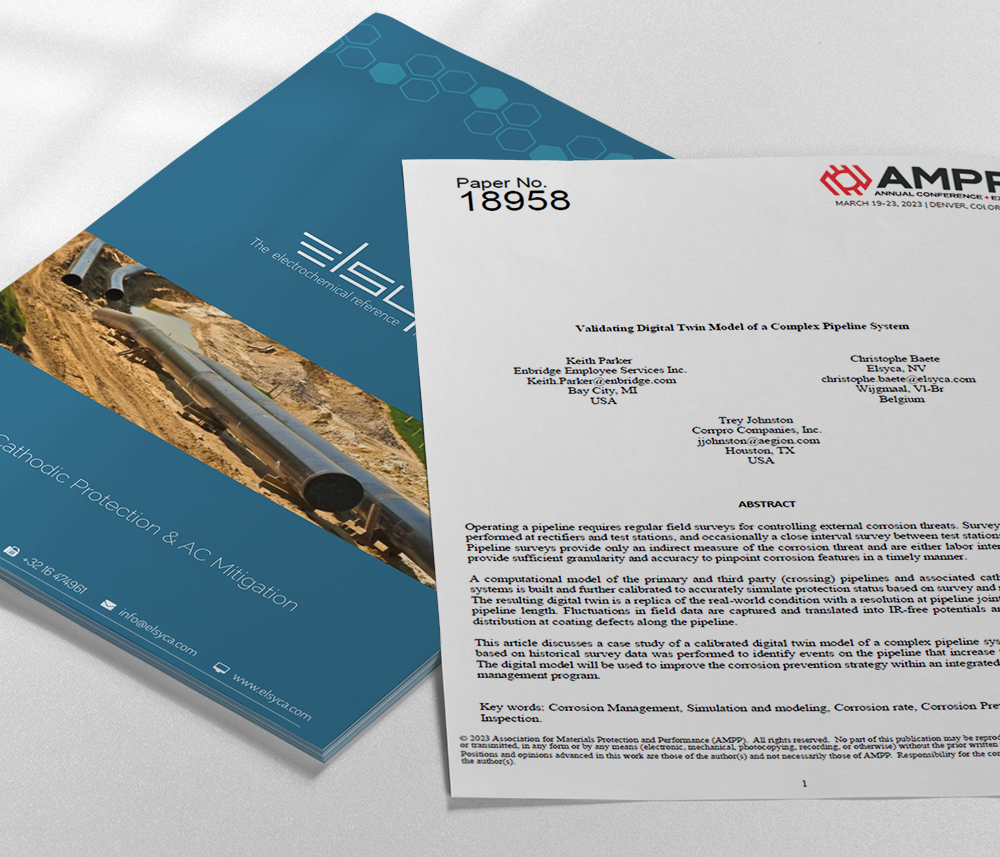
Validating Digital Twin Model of a Complex Pipeline System (AMPP 2023)
AMPP 2023 Conference Paper

Validating Digital Twin Model of a Complex Pipeline System (AMPP 2023)
Christophe Baeté, Elsyca, Inc.; Keith Parker, Enbridge Employee Services Inc.; Trey Johnston, Corrpro Companies, Inc.
Paper presented at the AMPP Annual Conference + Expo, Denver, CO, USA, March 2023
Paper Number: AMPP-2023-18958
Abstract
Operating a pipeline requires regular field surveys for controlling external corrosion threats. Surveys are typically performed at rectifiers and test stations, and occasionally a close interval survey between test stations is performed. Pipeline surveys provide only an indirect measure of the corrosion threat and are either labor intensive or do not provide sufficient granularity and accuracy to pinpoint corrosion features in a timely manner.
A computational model of the primary and third party (crossing) pipelines and associated cathodic protection systems is built and further calibrated to accurately simulate protection status based on survey and monitoring data. The resulting digital twin is a replica of the real-world condition with a resolution at pipeline joint level for its full pipeline length. Fluctuations in field data are captured and translated into IR-free potentials and corrosion rate distribution at coating defects along the pipeline.
This article discusses a case study of a calibrated digital twin model of a complex pipeline system. Back testing based on historical survey data was performed to identify events on the pipeline that increase the corrosion risk. The digital model will be used to improve the corrosion prevention strategy within an integrated external corrosion management program.
Introduction
Historically the corrosion condition and cathodic protection (CP) effectiveness of pipeline networks have been monitored by over-the-line surveys. Pipe-to-soil potentials and rectifier outputs are the major parameters measured, and for some pipelines a more intensive close interval survey is executed. Today test stations and more frequently rectifiers are equipped with remote monitoring devices which is shifting the industry towards the world of digitization. Unfortunately, external corrosion is still not fully under control. The Pipeline and Hazardous Material Safety Administration (PHMSA) reported that from 1998-2017 approximately 8% of pipeline incidents were caused by external corrosion, and has extended corrosion assessment requirements to a larger group of pipelines under the gas pipeline “Mega Rule” announcements [1]. With the development of in-line inspection (ILI) tools the risks due to pipeline corrosion have been reduced, but the root cause of this degradation mechanism has not yet been solved. Metal loss detected by ILI tools require excavation, examination, and repairs which often result in much higher cost than implementing proper corrosion prevention measures.
The digital twin concept consists of building a computer model of the pipeline network and calibrating the model based on the available cathodic protection and ILI data. The Elsyca V-PIMS™ mechanistic model used in this study allows the user to compute the cathodic protection potentials, current densities, and corrosion rates with a granularity at the joint level. Rectifier current is then imposed on the model, allowing current distribution computation between anode bed and pipeline (and other electrically buried structures) in a three-dimensional domain. The mechanistic model also considers the impact of high voltage AC powerline systems and DC transit systems where applicable [2].
